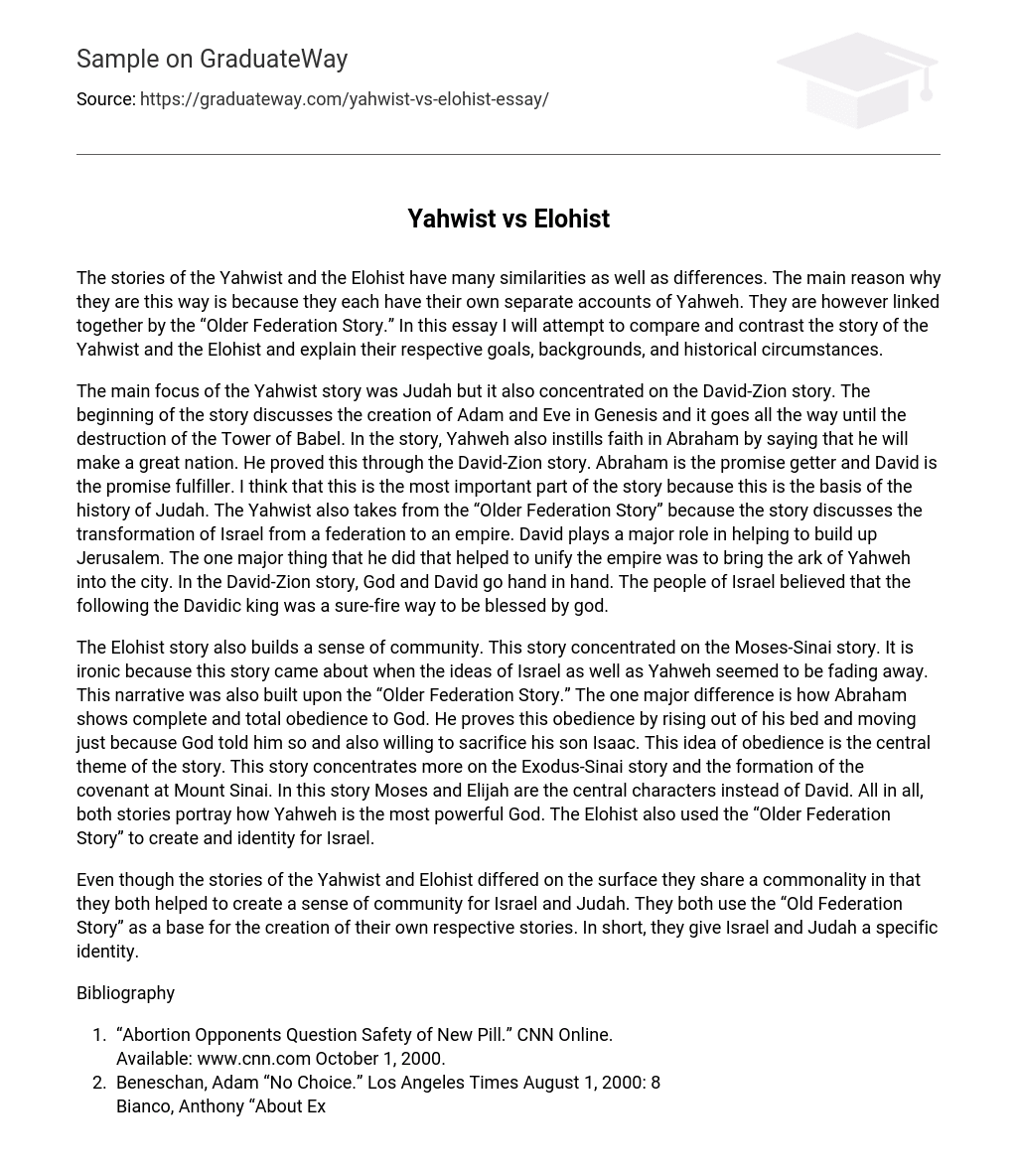The Yahwist and Elohist narratives share both similarities and differences, primarily due to their distinct accounts of Yahweh. However, they are interconnected through the “Older Federation Story.” This essay aims to compare and contrast the Yahwist and Elohist stories, examining their individual goals, backgrounds, and historical contexts.
The main focus of the Yahwist story is on Judah, while also highlighting the David-Zion narrative. It begins with the creation of Adam and Eve in Genesis and continues until the destruction of the Tower of Babel. In this story, Yahweh inspires Abraham’s faith by promising him to become the founder of a great nation, which is fulfilled through the David-Zion narrative. Abraham represents the recipient of this promise, while David symbolizes its fulfillment. Understanding this aspect is crucial for comprehending Judah’s history. The Yahwist incorporates elements from the “Older Federation Story” to depict Israel’s transition from a federation to an empire. Importantly, David plays a significant role in establishing Jerusalem by bringing Yahweh’s ark into the city. The relationship between God and David is closely intertwined throughout the David-Zion narrative, leading Israelites to believe that following a Davidic king ensures divine blessings.
The Elohist story emphasizes the sense of community and revolves around the Moses-Sinai narrative. Its emergence is ironic, as it occurs during a time when the concepts of Israel and Yahweh are seemingly fading. This narrative is also influenced by the “Older Federation Story,” with a key distinction being Abraham’s unwavering obedience to God. Abraham exhibits his obedience by immediately following God’s instructions, even to the extent of being willing to sacrifice his son Isaac. The theme of obedience is central to this story, which focuses primarily on the Exodus-Sinai account and the establishment of the covenant at Mount Sinai. In contrast to the David-centric perspective of the “Older Federation Story,” Moses and Elijah take center stage in this narrative. Ultimately, both stories highlight the supremacy of Yahweh as the most powerful deity. The Elohist also weaves elements of the “Older Federation Story” into the narrative to shape Israel’s identity.
Despite their surface differences, the stories of the Yahwist and Elohist have a common purpose in creating a sense of community for Israel and Judah. Both rely on the “Old Federation Story” as a foundation for crafting their own narratives, ultimately shaping a distinct identity for Israel and Judah.
Bibliography
-
“Abortion Opponents Question Safety of New Pill.” CNN Online.
Available: www.cnn.com October 1, 2000. -
Beneschan, Adam “No Choice.” Los Angeles Times August 1, 2000: 8
Bianco, Anthony “About Extortion or Abortion.” Business Week
October 9, 2000: 108 -
Bopp, James “Abortion rights is not issue.” USA Today April 25, 2000:
18A -
Brett, Regina “Alternatives to Abortion.” The Plain Dealer September 29,
2000: 1E -
Gregg, B.B. “Abortion foes control Legislature.” The Detroit News
May 15, 2000: 1 -
Hill, Amelia “Pro-life rage at ‘lessons in abortion’.” The Observer
September 3, 2000: 13 -
O’Neil, Peter “Poll shows abortion is not an issue.” The Gazette (Montreal)
August 31, 2000: A11





